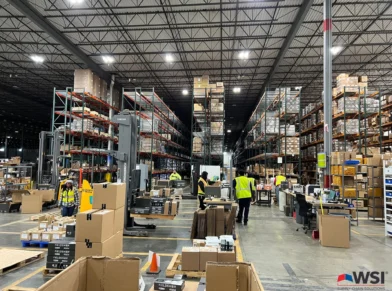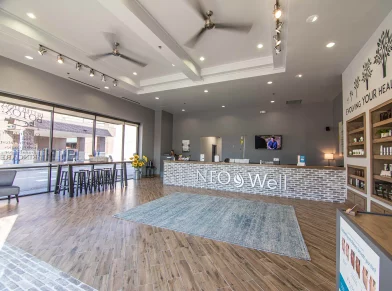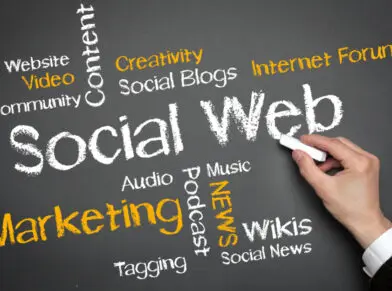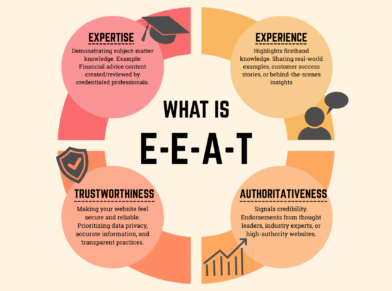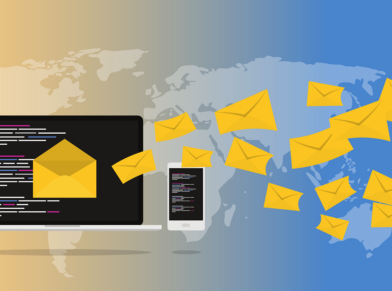What is a Performance Max Campaign?
Performance Max campaigns use the power of artificial intelligence (AI) to optimize ads across multiple Google channels to reach the most relevant audience and achieve maximum results. In the right circumstances, these campaigns can be an excellent tool to save time and effort. Below, we dive into Performance Max campaigns, discover their benefits, and determine if they might be right for your business.
What are Performance Max Campaigns?
Performance Max Campaigns are Google’s automated ad campaigns that leverage AI across multiple Google channels, including Search, Display, YouTube, Discover, and Gmail. This allows advertisers to reach a wider audience and achieve maximum results without the need for extensive manual optimization.
Performance Max Campaigns vs. Search Campaigns and Other Google Ads Campaigns
Here are the key differences between Performance Max campaigns and traditional Google Ads campaigns:
- Automation: Performance Max campaigns rely on AI to determine the best placements, bids, and creatives.
- Cross-channel optimization: Unlike traditional campaigns, Performance Max campaigns can reach users across various Google channels rather than just one.
- Asset-based approach: Performance Max campaigns use a flexible, asset-based approach, allowing advertisers to provide multiple text, image, and video assets that can be combined to create the most effective ads.
- Goal-based optimization: Performance Max campaigns are optimized toward a specific goal like conversions or website visits.
In essence, Performance Max campaigns offer a very efficient and effective way for businesses to reach their target audience and achieve their marketing objectives.
Key Features and Functionalities of Performance Max Campaigns
We’ve already discussed a PMax campaign’s four key features: automation, cross-channel optimization, an asset-based approach, and goal-based optimization.
PMax campaigns also offer these other useful features:
- Performance insights: Detailed reporting provides insights into campaign performance, allowing advertisers to track key metrics and make data-driven adjustments.
- A/B testing: The platform supports A/B testing of different assets and settings to identify the most effective combinations.
- Customizable settings: Advertisers can customize various settings, such as budget, targeting options, and ad scheduling.
- Integration with other Google tools: Performance Max campaigns can be integrated with other Google tools, such as Google Analytics and Google Tag Manager, for enhanced tracking and analysis.
How Do Performance Max Campaigns Work?
Performance Max (PMax) campaigns leverage Google’s AI and machine learning to continuously learn and adapt. By analyzing vast amounts of data, the AI system identifies patterns and trends that inform its decisions. For example, the AI might notice that certain types of ads perform better on specific channels or at particular times of day. Based on these insights, the system adjusts the campaign’s strategy in real-time to optimize performance. This iterative process allows PMax to continually improve over time, improving results.
Automated Bidding and Targeting
The PMax system continuously analyzes vast amounts of data to identify the most effective bidding strategies and target audiences. By considering factors such as user behavior, search queries, and past performance, the AI adjusts bids in real-time to maximize conversions or other desired outcomes. Additionally, the platform employs sophisticated targeting algorithms to identify and reach potential customers who are most likely to engage with the ads. This automated approach reduces the amount of time needed for manual optimization, allowing advertisers to focus on creating high-quality ad assets while the AI handles the complex bidding and targeting decisions.
Of course, this doesn’t mean you can set your PMax campaign and forget it. Smart advertisers continue to monitor performance of key metrics like clicks, conversions, and cost per acquisition, which are critical to your ability to evaluate your campaign’s overall success
Asset Groups
Asset groups are a fundamental component of Performance Max campaigns. They contain assets such as images, logos, headlines, descriptions, and videos that are used to create ads. One of the most unique facets of a PMax campaign is that Google ads mixes and matches these assets based on which channel the ad is being served on, testing different combinations to optimize campaign performance.
Here’s a breakdown of asset groups:
- Asset organization: Asset groups provide a structured way to organize and manage the various assets used in a Performance Max campaign.
- Ad creation: The AI uses assets from these groups to dynamically create ads that are tailored to individual users and their search queries.
- Testing and optimization: By creating multiple asset groups, advertisers can test different combinations of assets to identify the most effective ones.
- Customization: Asset groups allow for customization and personalization of ads, ensuring that the right message reaches the right audience.
Asset groups are essential for creating engaging and effective Performance Max campaigns. By understanding their role and leveraging them effectively, advertisers can maximize their campaign’s potential.
Performance Max best practices suggest you deploy A/B testing with multiple asset groups. Globe Runner can help set up your PMax campaign and design and produce top quality creative assets to promote your brand. Contact us today.
Benefits of Performance Max for Business Owners
Performance Max offers several key benefits for business owners:
Increased Efficiency and Automation
Performance Max campaigns offer a significant boost in efficiency for business owners. By leveraging advanced AI, these campaigns automate many of the time-consuming tasks involved in traditional advertising. This includes tasks such as bid management, audience targeting, and ad creation. As a result, businesses can allocate more resources to other aspects of their marketing strategy, such as content creation and customer engagement.
Improved ROI and Performance
One of the primary benefits of Performance Max campaigns is their potential to improve ROI and overall campaign performance. The AI-driven optimization shows ads to relevant audiences at optimal times, leading to higher click-through and conversion rates. Additionally, Performance Max’s ability to dynamically adjust bids and targeting based on real-time data helps to maximize the efficiency of advertising spend.
Wider Reach Across Google’s Network
Where do Performance Max ads show? PMax campaigns offer a unique advantage by reaching audiences across multiple Google channels, including Search, Display, YouTube, Discover, and Gmail. This expanded reach allows businesses to tap into a wider pool of potential customers and increase their visibility. By targeting users across various platforms, businesses can maximize their chances of connecting with customers at the right time and place.
Simplified Campaign Management
Performance Max campaigns streamline the campaign management process for business owners. The intuitive interface and automation features make it easier to create, manage, and optimize campaigns. Additionally, the platform provides comprehensive reporting and analytics, allowing businesses to track performance, identify trends, and make data-driven decisions. This simplified approach can save time and effort, enabling businesses to focus on other strategic initiatives.
Common Challenges with Performance Max Campaigns and Their Solutions
Performance Max campaigns, while powerful, present certain challenges, namelylimited control compared to traditional Google Ads campaigns due to their AI-driven nature.
- Automated Bidding: PMax’s automated bidding strategy that adjusts bids in real-time means you can’t manually set bids or adjust them frequently.
- Ad Placement: PMax determines placements for your ads across Google’s network. While you can provide some guidance through asset groups and targeting options, you have less control over where your ads appear.
- Dynamic Ad Creation: The AI creates ads using your provided assets, which means you have limited control over the specific messaging and visuals that appear in your ads. This means ad quality can be inconsistent, particularly when the campaign is young and still in the learning phase.
- Limited Channel-Level Insights: While PMax provides overall campaign performance data, it can be challenging to track performance across specific channels like Search, Display, or YouTube. This can make it difficult to optimize for specific channels or allocate budget accordingly.
Programmatic Advertising 101: What You Need to Know
What is Programmatic Advertising and How Does it Work?
The digital marketing landscape is evolving rapidly, with automation and artificial intelligence (AI) revolutionizing how businesses engage with customers. As companies place a larger focus on efficiency and personalization, they should incorporate programmatic advertising into the marketing mix.
This article will answer “What is programmatic advertising” and help you understand its use case across different businesses.
Programmatic advertising is an advanced and data-driven approach to digital advertising. It relies on automated technology and algorithms to make real-time decisions. These algorithms consider the criteria defined by advertisers and publishers in addition to customer behaviors.
One of the biggest benefits of programmatic advertising is that it lets you improve your audience targeting. It optimizes ad placement based on user data, behavior, and demographics, maximizing the chances of engaging the right audience at the right moment.
Programmatic advertising fits across the marketing funnel at different stages, serving varying roles. At the top of the funnel, it helps raise awareness by reaching a wide audience. In the middle, it nurtures and converts leads with personalized messaging. Finally, at the bottom, it aids in retaining customers and building brand loyalty. Further along in the article, we will explore how all this is accomplished.
In the world of paid media, programmatic advertising’s appeal lies in its efficiency and effectiveness, making it a compelling choice for advertisers seeking optimal results.
As a result, programmatic advertising has become a staple in the digital advertising space, with an estimated $148.83 billion allocated to programmatic digital display ad spending in the US in 2023.
Below, we explore how programmatic advertising works and how it can help your business.
How Programmatic Advertising Works
Programmatic advertising streamlines the journey from ad space buying to ad delivery. Before we explain how programmatic advertising works, here are a few important terms to understand:
Demand Side Platform (DSP): DSPs are used by advertisers and agencies to purchase and manage digital ad inventory across multiple ad exchanges and publishers.
Supply Side Platforms (SSPs): SSPs come into play on the publisher’s side. These platforms enable digital publishers to sell their online ad space in real-time auctions.
Real-Time Bidding (RTB): At the heart of programmatic advertising is RTB. When a user visits a page with ad space, there is an instantaneous auction. Advertisers bid for the ad space, and the ad of the highest bidder is instantly displayed to the user.
The flexibility of RTB enables advertisers to make adjustments to their bids, budgets and targeting parameters, optimizing campaign performance on the fly. Its transparency, cost-effectiveness, and scalability make RTB valuable for delivering relevant and engaging ads.
Data Management Platforms (DMPs): DMPs collect, analyze, and manage audience data. They provide valuable insights to advertisers, helping them craft data-driven strategies for precise audience targeting and campaign optimization.
Ad Delivery: Once the auction is won, the ad is delivered in real-time, appearing on the user’s screen while they are actively engaged with the content.
Ad Exchanges: An ad exchange is a digital marketplace that facilitates the buying and selling of ad inventory in real-time auctions. It connects advertisers with publishers, enabling them to buy and sell ad impressions.
Now that we know the meaning of relevant phrases let us look at how programmatic advertising works. When a user visits a website or app with available ad space, the publisher’s SSP quickly identifies the available ad spots and shares the information with the Ad Exchange. The SSP sets minimum prices for each ad spot to ensure the publisher gets fair value for their space. Then, through real-time bidding, DSPs enable advertisers to use algorithms to place competitive bids for these ad spots. This automated process ensures quick decision-making and helps advertisers effectively target their ads to potential customers.
Programmatic advertising differs from conventional methods by automating the ad-buying process through real-time auctions and data-driven decision-making. This can help you to target precisely and optimize your campaign. In contrast, conventional methods often involve manual negotiations and fixed ad placements, lacking real-time precision and audience insights.
How Programmatic Advertising Can Help Your Business
Programmatic advertising allows you to show a highly relevant sponsored ad to a potential customer who is browsing for your product.
That’s the magic of programmatic advertising. It targets with precision and agility.
Your business can leverage different aspects of programmatic advertising:
- Through automation in programmatic advertising, you can be in the right place at the right time. Automation allows algorithms to connect you to the most relevant audience and display your ads in real-time auctions, streamlining buying and selling ad space processes.
- Real-time analytics in programmatic advertising works by continuously collecting and processing data about user behavior, geography, preferences, and ad performance as it is happening. You gain valuable real-time insights into ad performance and audience engagement, enabling you to adjust your advertising strategy on the go.
- Scalability is another advantage, as programmatic advertising and automation can adapt to campaigns of any size. A local bakery can target a specific neighborhood with promotions during holiday seasons, while a multinational retailer can run global campaigns across multiple platforms.
- The targeting aspect of programmatic advertising is versatile and efficient.
- Behavioral targeting harnesses user data to understand interests and preferences. So, for example, if you run a fitness gear business, behavioral targeting allows you to display your products to users who frequently visit health and fitness websites.
- Persona targeting crafts ads tailored to specific customer segments, like a luxury watch brand showing elegant timepieces to high-income professionals.
- Geofencing narrows targeting to specific locations so that a restaurant can target an audience within a mile’s distance with an ad about its signature dish.
- Lastly, contextual targeting matches ads to relevant content. For example, a webpage with a blog about housing loans can display ads from real estate agents about available properties in the neighborhood.
Challenges In Programmatic Advertising and How Businesses Can Overcome Them
While programmatic advertising has multiple benefits, there are a few challenges that can be overcome with innovation and a responsible approach.
- Ad fraud remains a concern, where bots and fake impressions can skew performance metrics. Implementing robust verification tools and partnering with reputable ad exchanges can combat fraud.
- Privacy concerns arise from data collection practices, necessitating transparent privacy policies and user consent mechanisms. Many states are already enforcing GDPR-inspired statutes in 2023 in this regard.
- Data management issues include data quality and integration complexities. Employing data analytics tools and investing in data management platforms can streamline data processes, ensuring accurate and actionable insights.
For a business, it is crucial to maintain privacy and integrity so that your potential customers get a best-in-class purchase experience while your business can get maximum ROI.
Globe Runner- Your Trusted Partner for Programmatic Advertising
At Globe Runner, we run paid media and programmatic advertising, ensuring each ad campaign drives results. Our expert team generates new leads, reduces the cost per lead, and boosts your return on ad spend, maximizing the value of your advertising efforts.
Benefit from our tailored services encompassing paid searches, social media ads, remarketing, display, and conversion rate optimization. Our collaborative approach ensures a customizable paid media plan that delivers exceptional results. Book a call with us to learn more about a rewarding advertising experience.
What is Remarketing?
Remarketing might seem like a straightforward concept at first. However, as it turns out, it’s often understood and misunderstood in equal measure.
Those who truly understand it are seeing significant bottom-line growth from their remarketing efforts. And that’s because they take the time to carefully fine-tune its highly intricate campaign triggers.
The ones who misinterpret it, however, are struggling to figure out the configurations. Many of them mistakenly assume that remarketing is only a matter of plugging in automated retargeting tools, and then leaving the solutions to chase down cart abandoners on their own.
Much of this confusion comes from Google itself. Even though the platform is a remarketing giant in its own right, it doesn’t explicitly differentiate its remarketing services from retargeting solutions. The terms have been used interchangeably within its tool suite, thereby throwing off even seasoned marketers on where to draw the line between the two strategies.
Thankfully, that ends here. This guide explores all the essentials of remarketing, the best practices you should follow, plus the benefits you should expect. You also get to find out the differences between retargeting and remarketing, as well as the types of services that you should be getting from your remarketing agency.
Why Use Remarketing?
Remarketing is a digital marketing approach that allows brands to reconnect with individuals who have previously engaged with their business app, website, or other digital assets. The engagement medium is usually digital advertising channels – such as display ads, search ads, social media ads, and email marketing.
People here become part of a campaign audience once they’ve connected with a brand and shown interest. They could be first-time visitors who dropped out after exploring various product options, consumers who abandoned their cart while shopping, prospects who failed to complete filling out their forms, repeat customers who might have an interest in product upgrades, etc.
The primary goal of the campaign is to help businesses make a sale that they previously missed out on. If you take a look at your sales analytics, you’ll notice that out of the multitude of leads who regularly stream into your website, your conversion rate is probably in the low single digits.
Remarketing tools are designed to re-engage with those who did not buy, in the hope of closing the deal.
Remarketing campaigns also reach out even to the converted customers to maximize sales opportunities with them. Existing customers tend to convert at a much higher rate, with a remarkable 60% to 70% average conversion rate on subsequent purchases.
Remarketing uses deeply personalized dynamic ads to help you raise those stakes even further in your favor. You get to convert the target audiences so much faster by showing them precisely what they want even when they’re away from your site.
Retargeting vs. Remarketing
Although often used interchangeably, “remarketing” and “retargeting” are not synonymous. They may be closely related all right, but there are several distinct differences that set them apart from each other.
The Differences Between Retargeting and Remarketing

The primary differences between retargeting and remarketing lie in their target audiences, information collection methods, mode of targeting, and contact channels.
Retargeting uses personalized ads to connect with website visitors who left without converting, whereas remarketing is a broad term that covers all the personalized campaigns that target people who’ve interacted with your brand at any level – they could be first-time buyers, repeat customers, qualified leads, or just random prospects.
In essence, therefore, you could say that retargeting is a subcategory of remarketing. It represents only a fraction of the efforts – meaning that not all remarketing campaigns would qualify as retargeting strategies.
Retargeting: A closer look
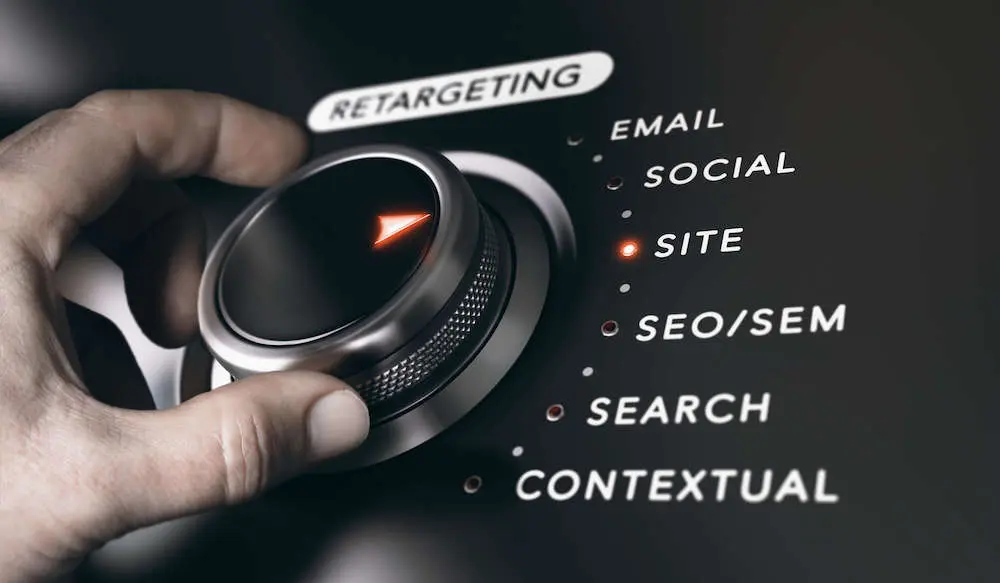
Retargeting deals with audiences who may not be very familiar with your brand. They’ve been to your website, and now an embedded tracking code – a pixel – has identified them as someone interested in your offerings. The pixel tracks them around the web while keeping tabs on their preferences and interests. All that info is combined and then used to personalize their targeted ads according to personal interests and web behavior.
The resultant retargeting ads are typically distributed through display ad networks such as the Google Display Network and Facebook Audience Network – both of which have an extensive footprint that extends across millions of publisher websites and apps. This is how you get to reach audiences wherever they go on the web.
Most of the individuals that you’ll be engaging with retargeting ads fall within the 96% share of unconverted website visitors. They are part of the bulk majority that are not ready to buy when they check into your website.
Remarketing: A closer look
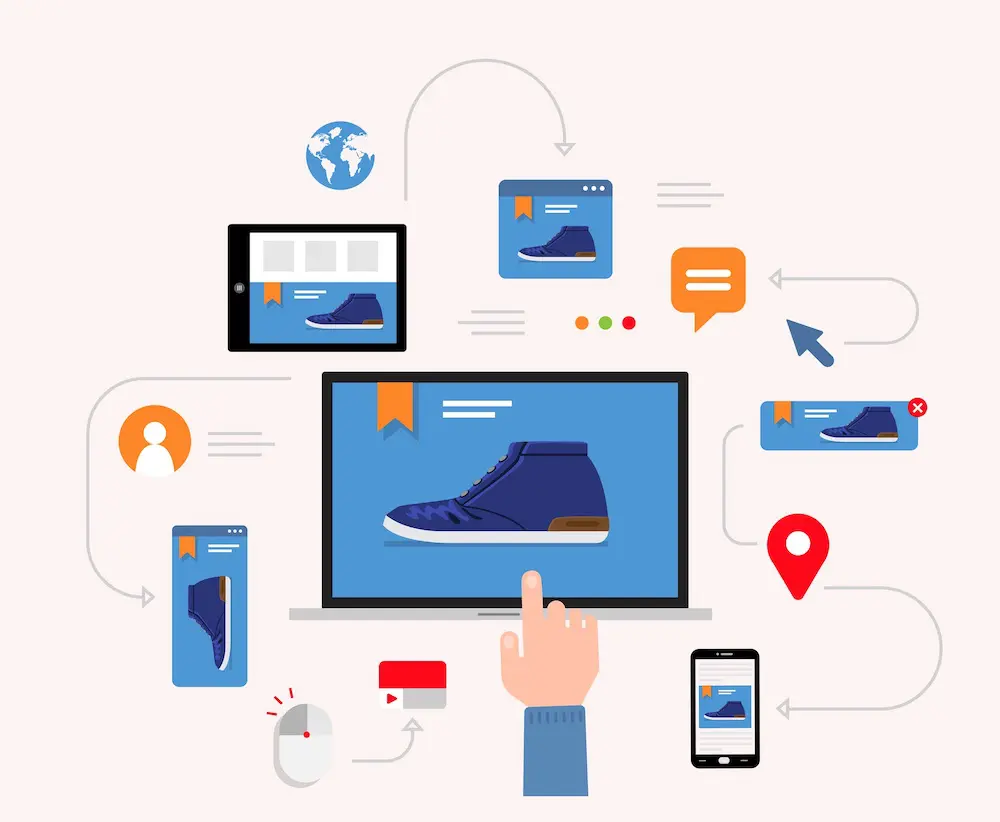
Remarketing, on the other hand, covers the entire spectrum of marketing efforts targeting all types of people who’ve interacted with your brand. It encompasses not just retargeting ads, but also other forms of targeted engagement strategies across various touch points along the customer journey.
The audiences here tend to be more familiar with the brand, as they’ve probably interacted with it multiple times. They range from serial site visitors, mailing list subscribers, past customers, blog subscribers, returning buyers, inactive leads, etc. Remarketing ads try to push all of them through the sales funnel and ultimately generate conversions.
With well-crafted remarketing services, it shouldn’t take you long to generate results. Repeat customers, for instance, have shown that they not only convert quicker, but also spend more as time goes by. In three years, they’ll be forking out 67% more than they did in their first 6 months.
That said, it’s worth noting that email was the traditional delivery channel for all these marketing messages. But, over time, remarketing expanded to accommodate additional options – with the primary ones now being display ad networks, social media, and on-site messaging. Some businesses are even investing in advanced remarketing services that support omni channel campaigns.
The customer information itself is obtained from all the data that your business has built up over time. You’ll be personalizing all the marketing messages using insights from your embedded website trackers, mailing list contact profiles, sales database, etc.
Best Practices for Remarketing Services
How to Optimize Remarketing Campaigns for Success
To achieve and maintain highly successful remarketing campaigns, you should always apply these best practices;
- Segment your audiences: To enhance ad personalization and relevance, segment your audience according to their behavior, interests, and demographics. This allows you to target each group with custom-tailored ads.
- Set clear goals: Clearly outline your campaign objectives and goals. This could be anything, from enhancing conversion rates and elevating brand visibility to growing your inbound traffic.
- Optimize ad creative: Remember to craft captivating advertisements that not only reflect your brand identity, but also resonate deeply with your intended audience. You can experiment with various ad formats, visuals, and messaging to establish the best balance of ad assets.
- Leverage dynamic remarketing: Employ dynamic remarketing to automatically generate customized advertisements that reflect each recipient’s behavior, interests, location, device, and past interactions.
- Regulate ad frequency: Don’t bombard your audience with excessive ads. You should, instead, avoid ad fatigue by regulating the frequency of ad displays
- Test, measure, and optimize: Keep experimenting with various strategies, ad formats, and targeting alternatives to uncover the most effective approach for your remarketing campaigns. And while you’re at it, you should especially monitor your click-through rates (CTR), conversion rates, and the accompanying return on ad spend (ROAS) KPIs.
Conclusion
Remarketing isn’t just a matter of plugging in automated retargeting tools and then letting them run. Successful remarketing campaigns implement a multi-faceted workflow that tracks visitors’ interactions within your website, segments audiences, and then uses the insights to define personalization triggers for your dynamic remarketing campaigns.
But this is easier said than done, of course. You’ll need to keep building, managing, coordinating, and tracking all those campaign parameters while, at the same time, configuring the corresponding automation sequences.
The good news is, you can save yourself all that headache by turning to professional teams like Globe Runner. We have expert strategists, marketers, designers, and copywriters, all of whom will work together to ensure that your retargeting ads are always aligned with your brand and the interests of the target audience.
So advanced are our remarketing services, in fact, that we’ve been recognized as an official Google Partner. This form of certification comes with exclusive access to Google’s tools and info – assets that could go a long way toward empowering your remarketing campaigns.
Contact us today for a quote. We’re ready to supercharge your conversions with our highly advanced remarketing services.
Holiday Season and PPC
It’s the Holiday Marketing Season
With the exception of yearly back-to-college shopping, the winter holiday season is the biggest consumer spending event of the year. Adobe predicts that online sales will be up 2.5 percent over last year—with sales expected to reach $209.7 billion. It may seem too early to be thinking about the winter holidays while you’re still pondering Halloween costumes, but it’s already time to break out the pumpkin-spice and make sure your business doesn’t miss out on a successful holiday season that sets you up for the new year!
Gone are the days when Black Friday signaled the start of the holiday shopping season. Now, that season starts in October. Last year, less than 20 percent of US shoppers intended to wait until after Thanksgiving to start shopping, and 43 percent intended to start before November. What does that mean for you? It means you could miss out on potential customers if you think you still have plenty of time to start your holiday marketing campaigns.
So, where should you be in your holiday campaigns, and is it too late to catch up? Let’s ease your minds first—it’s definitely not too late, but you may need to put everything in high gear! Many businesses have most of their planning and list clean-up done by the end of September and focus on the specifics of their holiday advertising in October, to have it ready to go by mid-to-late-October. Let’s dive into some easy holiday advertising ideas.
Holiday marketing techniques
Use video marketing or webrooming. People love videos . . . and “trying” things. Make your pay-per-click (PPC) ads video ads to raise interest and engage potential customers. Or turn your website into a virtual showroom where customers can “browse” or virtually try your products.
Make online communication a two-way street. Engage with your potential customers on social media and on your website. Try using polls on social media or running contests. Make sure you’re responding to customer interactions on social media.
Be festive! Incorporate holiday themes, images, and puns into your holiday shopping ads. Holiday shopping can be stressful. You can lighten the mood and relieve some stress for your customers with fun and festive ads that give them some of that holiday spirit back.
Retargeted! Ensure you have a comprehensive retargeting campaign. Most people shop; around online before they make a purchasing decision. Making sure that you’re following up on items left in carts and people who stopped by your site but didn’t purchase anything can bring in extra sales.
While you’re at it, don’t forget to make everything you do mobile-friendly. It’ll keep your customers and search engines happy. More and more people are using their phones to make purchases and Google prioritized mobile-friendliness in their search engine ranking algorithms. Feeling overwhelmed? You’re not alone! So are most holiday shoppers. They’re worried about inflation and the supply chain, not to mention the stress of hosting family and friends for the holidays. They’re looking for a shopping experience that removes some of their stress levels and makes their holiday shopping experience run a little smoother so they can focus on their families.
Just like you can make your customers’ holiday season a little more convenient and easy to manage, a full-service digital marketing agency, like Globe Runner, can do the same for your holiday marketing season. Everyone goes into high marketing gear for the holidays, which is why now is a great time to engage in a pay-per-click holiday advertising campaign. Prices of ads do go up during the season, but the payoff is worth it. And agencies like Globe Runner can make sure you get the most for your PPC money. But don’t stop there! Globe Runner can also assist with conversion rate optimization and SEO.
Frequently Asked Questions
Why should you advertise during the holiday season?
Let’s be honest, you should be marketing all year long! But the holidays are a fabulous time to engage your loyal customers and bring in new ones. It is, without a doubt, one of the busiest (and most profitable) shopping seasons of the year. The question is really, why wouldn’t you advertise during the holiday season?
When should you start advertising for the holiday season?
Supply chain issues over the last few years made people nervous about waiting to purchase gifts. And they’re worried that inflation will keep increasing prices. While the weekend after Thanksgiving used to signal the start of the holiday shopping season, it now starts in mid-October. Which means you should be advertising now! But it’s not too late to put together a stellar holiday advertising campaign and make the most of the holiday season!
5 Reasons Your Business Should Use Social Media for Advertising
These days, advertising and social media go hand in hand, but that wasn’t always the case. The social media impact on business has been tremendous—and it keeps growing. Before social media, communication between a business and customers was only one way. You put your message out there—and hoped it reached the right people. With social media, businesses have a dialogue with their customers—and the ability to target with undreamed specificity. And, in the almost 24 hours per week that the average American spends online every week, consumers are liking, following, commenting, researching, and buying. Let’s examine how social media helps small businesses.
Benefits of Advertising on Social Media
- Brand Awareness. Even when people aren’t actively interacting with your advertising on social media, they’re seeing it while they scroll—and it’s registering in their mind somewhere. In this way, you’re increasing awareness of your brand every time someone scrolls by your ad.
- Brand Loyalty. Advertising on social media has a human aspect that other advertising often doesn’t have. Customers love to interact with businesses on social media—and they love it even more when businesses interact back. Those interactions create a human connection that builds brand loyalty.
- Better Search Engine Rankings. While advertising on social media alone won’t significantly increase your search engine rankings, social media increases visibility and, paired with a strong SEO and paid media strategy, will help give you a boost.
- Reduced Marketing Costs. Social media marketing allows you to laser focus your targeting to reach exactly the audience you want. This means you have to spend far less money to reach more of the right potential customers.
- Customer Feedback. Consumers want to be heard. Social media allows you to receive and respond to customer feedback in real-time, increasing customer satisfaction and giving you a genuine understanding of what your customers want.
Types of Social Media Advertising
Now that you’re bought into the “why,” you’re ready to fire up your MySpace page and build some brand loyalty . . . or maybe we take a quick pause to think about social media platforms out there and which are most effective for your company—spoiler alert: not MySpace.
- YouTube: YouTube ads reach almost 3 million users and offer many different targeting and advertising options. It’s also the second most visited website in the world and reaches all ages.
- Facebook: It’s still the largest social media site in the world. While primarily a space for Millennials, all generations exist on the platform, and it’s widely considered a valuable place to market.
- Instagram: It’s an influencer paradise and offers incredible targeting options. Like Facebook, it’s a popular platform, although users tend to be younger than the Facebook demographic.
- LinkedIn: It’s considered the most serious and trustworthy social media platform. LinkedIn is where you’ll find college-educated young adults looking to network with money to spend.
- TikTok: A quarter of users are between 10 and 19. Because it skews young, you’ll find fewer users with disposable income, but with a higher population of teens, you find those who will go to parents or caregivers who can make purchasing decisions.
- Twitter: Twitter is a heavily male and urban platform. Similar to LinkedIn, you’ll find more people on Twitter with higher purchasing power.
While these aren’t the only options, they are some of the most popular and likely to get you results. And our team at Globe Runner has significant expertise in all those platforms and can help you turn social media into rocket fuel for your business. From remarketing to paid ads to testing and reporting, we do it all. Get in touch today to discuss how to take your advertising strategy to the next level.
Frequently Asked Questions
Why advertise on social media?
Because that’s where people are. These days, everyone is on at least one social media platform, if not more. An effective social media advertising strategy will build brand awareness and loyalty while creating a feedback loop that creates a true sense of human relationship with your customers.
Is social media effective for advertising?
Absolutely! However, the effectiveness of social media advertising depends on the thought and effort you put into your strategy. You need to think about your audience and who to target. Different subsections of people are more likely to use different social media platforms, so ensuring you’re advertising on the right platforms is key to your success. So is creating a social media brand persona appropriate for the platform and target audience.
SEO vs SEM vs PPC: What’s Best for Your Business?
Why Digital Marketing?
Have you Googled yourself lately? How do you rank when you search for those ever-important keywords that define your business? It doesn’t matter how amazing your company, services, or products are, your business will never be a success if no one knows about it—and the vast majority of people start their search online using a search engine such as Google. While different analyses turn up slightly different results on the importance of digital marketing, one thing is clear, if your company isn’t on page one of search engine ranking pages (SERPs), there’s less than a one percent chance that someone will click on your website. And over 30 percent of clicks will go to whichever site is number one on that first page. With that in mind, your digital marketing plan is critical to your success. There is no one-size-fits-all digital marketing strategy—and your strategy team should be able to help you determine what’s best for your business and goals. Let’s break down a few of the more common terms you’ll hear when it comes to digital marketing and how they may be helpful to you. Based on your specific goals and budget, you may want to incorporate all of them into your overall strategy or pick and choose.
Search Engine Optimization (SEO)
SEO is incredibly complex and ever-changing. Just as you think you’ve got it all figured out, algorithms change, and so does your strategy. Many businesses still think that populating their websites with some important keywords will do the trick—and that absolutely may have been the case in 1998, at the advent of Google search. But ensuring top search rankings is now a multi-faceted, ongoing, and key part of your overall marketing strategy incorporating (among other things):
- Technical SEO—all the technical aspects of your site that make it more visible in searches, including site architecture and speed, sitemaps, and link structure
- Off-Page—elements off your site that build its popularity and ranking, including link building, reviews, and guest posting
- Content Optimization—everything on your page that keeps it at the top of SERPs, including content, keywords, and usability
Using a professional digital marketing agency like Globe Runner ensures that you’re constantly getting the best results without falling into common errors and traps, such as not having a sitemap, lack of internal links, or focusing on the wrong traffic or keywords.
Pay-Per-Click (PPC)
PPC is exactly what it sounds like and is an important part of directing traffic to your site. In the simplest of terms, PPC is the placement of digital advertisements for which you pay each time the ad is clicked on. There are multiple ways that PPC advertising works including:
- Flat-rate—paying a flat fee for each click
- Bid-based—placing a bid for an advertising space (highest amount they’re willing to pay) and each time a user triggers the ad slot, an automated auction occurs and the winner gets the ad slot.
While there are many strategies for this type of bid-based PPC, two of the most common are:
- Cost Per Click (CPC)—sets a cost per click that you are not willing to go over
- Return On Ad (ROA)—sets a target return on conversion (set as a percentage, e.g., if you are trying to make 2 dollars for every dollar you spend on advertising, your target ROA is 200%)
Search Engine Marketing (SEM)
SEM and PPC are both paid methods of increasing your SERP placement. The main difference is that SEM focuses specifically on marketing through search engines. PPC can fall under SEM, for instance, if you purchase a PPC ad on Google search, that’s also SEM.
With all aspects of digital marketing, the best results come from bringing in the experts. Globe Runner is a Google Partner, meaning that multiple digital marketing experts are certified in Google AdWords and they continuously meet Google’s performance standards. That technical expertise is a necessity, but while understanding all the technical ins and outs of digital marketing and SERPs is absolutely critical to your digital marketing success, the creative aspects of digital marketing are just as important. That’s why Globe Runner’s team includes experienced copywriters and visual designers to ensure that the creative aspects of your marketing are as extraordinary as your business is.
FAQs
What is the difference between PPC and SEO?
Pay-Per-Click (PPC) advertising and Search Engine Optimization (SEO) are both strategies used to drive traffic to your website and boost your online presence and sales. SEO relies on expert optimization of your website (as well as off-page strategies) to drive organic traffic by ensuring your website ranks high up in search engine results. PPC drives traffic to your website through digital ads that you pay a publisher a fee to each time your ad is clicked on. While, technically, SEO is the “free” option, optimizing your website to drive organic traffic to it takes incredible knowledge and expertise, as well as taking time—over months—for the optimization to start showing results.
What is the difference between SEO and SEM?
While Search Engine Optimization (SEO) and Search Engine Marketing (SEM) are often used interchangeably (and SEO is still sometimes considered a part of SEM), they are two different sides of the search engine results coin. At the most basic level, SEO uses organic methods to increase your search engine results ranking and SEM uses paid methods.
Is SEO part of performance marketing?
Performance marketing is an umbrella term that includes any strategy in which advertisers or marketing companies are paid based on performance—such as a click, sale, impression, etc. While, technically, SEO does not fall under that umbrella since it is organic, it is an integral part of your overall digital marketing strategy, and many experts consider it to be a part of a performance marketing strategy.
How do you rank on Google?
The answer to that question is not only complex, but it changes frequently. Search engines base their results on algorithms that are stringently tested and updated on a regular basis. In Google, search engine results incorporate many different factors including relevance, keywords, page quality, E-A-T (expertise, authoritativeness, trustworthiness), page usability, and context.
How to Use LinkedIn for Business in 2022
Though LinkedIn launched in 2003 as a social networking and job search site, it has evolved to be so much more—and that’s good news for your business. Its original intent to connect businesspeople and expand professional networks also makes it a great way to promote your brand, engage with potential customers, and drive traffic to your website.
Why Use LinkedIn for Business?
If the reasons above aren’t enough to get you aboard the LinkedIn train, consider this: LinkedIn has 800 million members in more than 200 countries and territories worldwide. The site is also a super-charged lead generator, capturing leads 227% more effectively than Facebook and Twitter. And perhaps most importantly, it’s where you’ll find your customers, especially if you’re a B2B business. “LinkedIn has grown from a website for job-seekers to a complete social media platform that professionals use even when they’re not on the hunt,” says Hubspot’s Jamal Meneide.“That’s why LinkedIn is a critical tool, especially for B2B businesses. After all, if someone is scrolling LinkedIn, it means they’re already in the business mindset.”
Tips for Promoting Your Business on LinkedIn
Of course, if you want to use LinkedIn for marketing, you’ll need to do more than just hang out by the virtual water cooler. Try these tips:
Make the most of your profile and business page(s).
- Keep them updated. Seriously. Don’t forget.
- Use the status update field on your personal profile for company news.
- Add examples of your work.
- Use a voice that’s consistent with your brand.
- Include all your specialties. Use the language people are most likely to use when searching.
- Optimize your page for search. Utilize keywords and hashtags, link to your page from your website, and share content often.
- Take advantage of Product and Showcase pages. Use these subpages to feature new products, generate leads, highlight campaigns, and more.
- Fill your company’s Life page with company photos, videos, and testimonials.
Share and create compelling content.
- Share relevant LinkedIn posts as well as external articles. Credit authors by linking to their websites and tagging their LinkedIn profiles.
- Ask questions. This promotes engagement and gives you a chance to learn what others in your industry think.
- Working on a cool new project? Let the world know!
- Share your expertise. Write a new post for LinkedIn or syndicate an existing blog post from your website.
- Use visual content: photos, videos (live video works especially well), and even PDFs or PowerPoint presentations.
Do it by the numbers.
- Keep an 80/20 balance. Keep promotion to 20% of your posts. Since LinkedIn is all about business, you can stretch that a bit, but beware of selling all the time.
- Follow LinkedIn’s 5-3-2 rule: For every 10 posts, 5 should be shared posts, 3 should be original posts that help your audience solve a problem, and 2 should be fun content that gives your company character.
- Post 2-5 posts a week for optimum engagement.
Network, network, network.
- Actively participate in LinkedIn groups. Add a short signature with your company info.
- Create a group. It shows initiative and collaboration and can help you learn about industry trends—all while promoting your company. Groups can only be set up using your personal profile.
- Ask your customers for recommendations. Social proof goes a long way.
- Invite people to follow your page. You get one hundred credits to use to invite your personal LinkedIn contacts to follow your business page. When someone accepts, you get that credit back. Anyone with super admin or content admin roles can get credits, too, so think about giving access to top people in your team.
The Absolute Best Way to Market on LinkedIn
Use a professional digital marketing agency. Yes, we know that might sound a little self-serving, but hear us out. As you can see, LinkedIn provides a great opportunity to market your business—an opportunity that’s almost certainly underutilized. Why? Anyone can use LinkedIn for marketing, but it’s a lot of work, much of it specialized: keyword research, graphic design, copywriting, video production, etc. Don’t let your lack of time or expertise keep you from taking advantage of all LinkedIn has to offer. Outsource the job to professionals who’ll do the job even better than you would. That’s us, Globe Runner. Contact us today.
Promoting Your Business on LinkedIn FAQs
Can you advertise for free on LinkedIn?
Not exactly. LinkedIn offers four types of ads for purchase: Sponsored Content, Sponsored Messages, Lead Gen Forms, and Text Ads. And though you can’t’ really advertise on LinkedIn for free, much of your LinkedIn marketing plan doesn’t have to cost a dime (see our tips). You can also post job opportunities gratis.
How do I setup a LinkedIn business account?
It’s super easy, but you’ll have to do a few things first. For safety’s sake, LinkedIn requires that you have a personal profile with your real first and last name that’s at least 7 days old, has a profile strength of “Intermediate” or “All-Star,” and has an email unique to your company (no generic domains like Gmail or Hotmail). You should also ensure you’re listed as a current employee of your company in your profile’s “Experience” section. Once your personal profile meets these guidelines, you can create a LinkedIn business page.
How much does a LinkedIn business page cost?
Nothing! Such a deal, right?
Part 2: How Does Instagram’s 2022 Algorithm Affect Your Business?
Part 2: How to Reach More People on Instagram
How can your business get more views on Instagram? Don’t worry, you don’t have to be camera-ready. You can even wear your pajamas to work, as long as you take the time to read our two-part series about Instagram’s 2022 algorithms. Part 1 explained Instagram’s algorithm for the feed, Stories and Explore pages, and for Reels and Instagram TV. If you missed it, we suggest you go back and read it so you’ll have a better understanding of the information we’ll present here in Part 2.
Tips for Using Instagram’s Algorithms to Get More Views
In Part 1, you read that Instagram’s 2022 algorithms use data that measures post information, poster (the person or business who posted) information, user activity, and interaction history. In other words, they basically boil down to one question: How likely is the user to be interested in the post? That makes sense, but how do you use your newfound 2022 algorithm knowledge to get views on Instagram? We’ve got a few tips:
Content Creation Tips
Take a long hard look at the content you’ve been posting.
- Does it solve a problem for your viewers?
- Entertain them?
- Engage them in an industry-relevant discussion?
You don’t need to answer all of those questions affirmatively, but if you can’t say yes to at least one, you’ve got work to do.
Make it easy to engage. Encourage direct action with:
- A CTA button (when appropriate).
- Interactive stickers. Polls, questions, emoji sliders, locations, quizzes, hashtag stickers, countdown clocks and more—there are stickers that fit almost any post. Check out this Shopify Post for a breakdown of types and how best to use them.
- Hashtags. They help people find you and share you.
- Captions. Write captions that prompt viewers to take action. Ask them to answer a question, tap if they agree with your post, or tag other viewers.
Change up the form of content you post. Try:
- Sharing Instagram Reels. These 15-30 second videos are easy to create and are more likely to get your post added to the Explore page, where you’ll gain exposure to new viewers. Instagram’s 2022 algorithm also favors its newer features, like Reels, so you’ll up your chances of being seen.
- Producing longer video content. Share non-Reel videos on Instagram TV (formerly IGTV). Surveys indicate that video increases sales, ROI, brand awareness, and time spent on related websites.
- Creating carousel posts. According to HootSuite, Instagram carousel posts get 1.4 times more reach and 3.1 times more engagement than regular posts.
- Use eye-catching graphics and motion. You’ll grab more attention.
- Highlight your location. Posts with tagged locations get 79% more engagement than ones without.
Relationship-Building Tips
Comment on others’ posts. Who do you want to follow you, share your posts, and/or become your customers? Once you learn who they are, follow, comment, and share their posts.
That includes the big dogs. Sure, commenting on a Nike post doesn’t mean they’ll reciprocate, but it does put the name of your shoe store in front of your target audience.
Share others’ content about your brand. If people are talking about you, your company and/or your brand, share the posts in Stories, and don’t forget to tag them.
Don’t forget to respond to comments. And do it as soon as possible, to create social proof, increase engagement, and just to be polite.
Consider timing. Figure out the best time to reach more people on Instagram with the help of their Analytics report, which will show you when your targeted viewers are most active. (Look in Insights, under Audience). Chat. Send messages to people you particularly want to engage with. Make sure to be genuine, and not too sales-y. Before messaging, ask yourself, “What’s in it for them?” (A good question to ask yourself when dealing with almost anyone about almost anything.)
Posting Tips
Post Stories often. By doing so, you’ll put your brand in front of people as soon as they hop on Instagram.
Share across feeds. Share Reels to your feed. Share your feed posts to Stories. Share previews of your Instagram TV videos to your feed.
Repost former posts to Stories. Did you know you can do this? What a great way to make sure your audience sees important contentEmbrace the new. As mentioned earlier, Instagram’s 2022 algorithm favors content posted on its newest features. Stay up-to-date and be an early adopter.
Instagram FAQs
Still have questions about how to get views on Instagram? We’re here to help.
- What is a good reach rate on Instagram in 2022? The average Instagram engagement rate is 4.7%. We suggest you aim higher than the average, remembering that smaller brands/accounts can get better reach rates than large brands with lots of followers. For example, Kazakhstan beats out all other countries with an Instagram reach of 78.7% of its population. Small can be good.
- What is a good engagement rate for Instagram in 2022? Engagement rates vary depending on the number of followers you have and how active they are Most analysts seem to agree that a good engagement rate is somewhere between 1-5%. Again, smaller accounts can (and should) get better engagement rates than large ones.
- Why are my hashtags not working in 2022? Though there’s been a lot of talk about shadow-banning, it’s more likely you’re using hashtags that are:
- Too broad.
- Too competitive.
- Unrelated to your posts.
- Banned. You’d be surprised at some of the hashtags that have been banned (like “workflow”). Search for “banned hashtags” to keep on top of the latest news.
It could also be the way you’re using hashtags.
- Don’t delete and re-add hashtags too often.
- You may be using too few or too many hashtags. While there’s an everchanging debate about the “right” number of hashtags, it’s really up to you to figure out the number that will resonate with your audience.
- You may come off as spammy or sales-y. Remember to ask yourself that good all-purpose question: “What’s in it for my viewers?”
One more FAQ: How can I do all of that well, keep up on trends and new features, and make sure I’m using the right number of non-banned hashtags? Well, you can work late, or you can work with us. We’ve got the time and the expertise to help you reach more people on Instagram. We’re good at our business. Let us take care of yours. Contact us today.
Part 1: How Does Instagram’s 2022 Algorithm Affect Your Business?
An even better question: “How can Instagram’s 2022 algorithm affect your business?” In a great boon for users, Instagram has told us what drives their latest algorithmic decisions, and how we can use that knowledge to reach more people on Instagram. They’ve given us a treasure map—of sorts. The directions are good, but only if you:
- Take the time to really read the map (You’re doing that now, so there’s one thing checked off your list.)
- Understand the clues. (We’re going to help you with that in just a minute.)
- Put in the work. (It takes time, but at least it doesn’t involve digging for buried treasure. Or pirates.)
After reading that last bullet, you may wonder if the work needed is worth your time. Sure, Instagram is great for social media influencers and the like, but can it really help your business? Yes. Over a billion people use Instagram every month, and over 200 million of them visit at least one business profile daily. A majority (81%) use Instagram to research products and services, and not just for retail: More B2B decisionmakers conduct research on Instagram than on LinkedIn. And did we mention that Instagram is now the most popular social platform for following brands and that user time spent on Instagram grew a whopping 13.8% in 2020?
In this two-part blog post, we’ll help you make the most of your time with a brief but thorough examination of the 2022 Instagram algorithm, plus tips for using it to boost your business.
Part 1: The Instagram Algorithm Explained
The first thing to understand is that there is no 2022 Instagram algorithm. There are new Instagram algorithms. “When we first launched in 2010, Instagram was a single stream of photos in chronological order,” Instagram CEO Adam Mosser said in a June 8th announcement on Instagram’s blog. “But as more people joined and more was shared, it became impossible for most people to see everything…By 2016, people were missing 70% of all their posts in Feed, including almost half of posts from their close connections.” To fix that issue, he explained, they changed the way Instagram ranks posts by using algorithms tailored to the different parts of the app, based on how people use them. Here’s a quick outline:
The Instagram Feed and Stories algorithms: Instagram’s 2022 algorithms use thousands of signals—factors that include everything from the device used to the content liked—to rank content based on what the individual user will enjoy. The Feed and Stories algorithms use these signals’ similarity, ranking them by:
- Post information: Photo or video? When was it posted? How many likes did it receive, and how quickly? Stories also shows users posts by location, which is why location-specific hashtags can help boost posts.
- Poster (the person or business who posted) information: Are they friends with the user? Interesting to the user for another reason? What’s their engagement level with other similar users?
- User activity: Is this the type of content the user typically likes?
- Interaction history: Has the user engaged with the poster’s other posts and vice versa?
Using other signals, Instagram also gauges the user’s probable interaction, looking at how likely they are to like, save or comment on the post; how much time they’ll probably spend on the post; and whether they are likely to tap on the poster’s profile after viewing the post.
The Instagram Explore Page algorithm: The Explore page shows users new content that Instagram thinks they’ll like. That’s determined by much the same blend of signals used in Feed and Stories, but ranked in a different order:
- Post information
- Interaction history
- User activity
- Poster information
The fact that users can search by keywords, as well as hashtags, implies that a post’s caption and visual content also figure into the Explore Page algorithm.
The algorithms for Reels and Instagram TV: These Instagram algorithms determine how likely users are to watch a video all the way through; in other words, how entertaining they find it. Again, the signals are much the same as the other algorithms, but ranked in yet a different order:
- User activity
- Interaction history
- Reel information
- Poster information
How Can You Use the New Algorithms to Get Views on Instagram?
Now that you’ve read the Instagram algorithm “map” and deciphered its clues, how do you use your new knowledge to help broaden your business’s reach and drive engagement? Luckily, there’s a lot of practical information and easy-to-implement Instagram algorithm tips—so much so that we’ll devote our entire next post to the subject. In the meantime, we’d like to help you with your social media strategy. We’ve got the experience, the expertise, and the time—and you probably don’t. We’re good at our business. Let us take care of yours. Contact us today.
